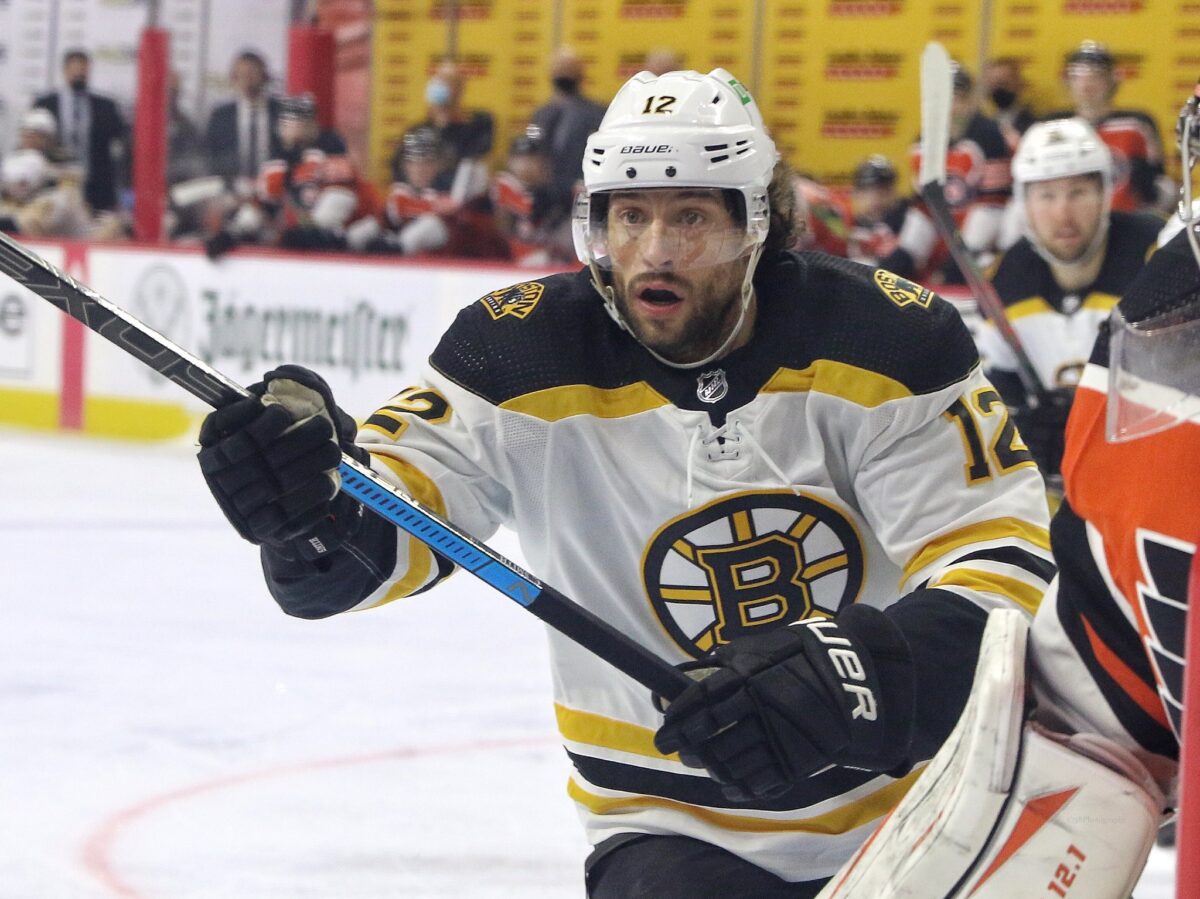Playoff caliber teams achieve success by finding production up and down their lineup. The Tampa Bay Lightning set the standard for depth scoring with their third line’s contributions in each of their back-to-back Cup wins. As the Boston Bruins try to end the Lightning’s Stanley Cup streak, depth scoring and role players will be crucial, and one Bruin who will play a key role in the team’s success (or failure) is Craig Smith.
Smith’s Impact on Any Lineup
Smith was signed by the Bruins following the 2019-20 season as a free agent from the Nashville Predators. In Nashville, he was playing on the Predators’ third line with Nick Bonino and Rocco Grimaldi, creating one of the strongest statistical lines in the league. While other lines struggled to produce, Smith’s always seemed to be pinning the opponent in their own end and creating offensive opportunities.

Fast forward to today, and Smith’s Nashville linemates have had less success without him. Nick Bonino is on his second team in two years after being traded to the Minnesota Wild before last season and then signing with the San Jose Sharks as a free agent before this season. Grimaldi is in the AHL, playing for the Predators affiliate Milwaukee Admirals. He has not seen regular ice-time in Nashville since Smith and Bonino left the Music City.
Is this all to say their fortunes would have been different had they stuck together? Maybe, maybe not, I’m not here to play the “what if” game. Instead, I would contend it was the beginning of a trend Craig Smith has shown throughout this season: he has a positive impact on any line, regardless of where he is slotted into the lineup.
Smith’s Success on the Second Line
Smith started the 2021-22 season on the Bruins’ second line, most often paired with Charlie Coyle in the middle and Taylor Hall on the opposite wing. This line was fine; their stats never jumped off the page, but Smith was not the issue. As others have noted, Hall didn’t hit double-digit points until Thanksgiving. For a winger who was brought in to drive offense, those numbers are stalling. Smith’s numbers didn’t wow either, but he was not brought in to carry the second line – he has always been a fantastic complementary piece, which brings me to my next point.
Smith Promoted to the Bruins’ Top Line
In the middle of the season, when Cassidy decided to shake up his lines, splitting up the Perfection Line of Brad Marchand, Patrice Bergeron, and David Pastrnak, Smith was the lucky man tasked with filling in for Pastrnak on the right-wing. Hall was then joined by Pastrnak on the wing and Erik Haula in the middle of the second line, and Coyle was bumped down to the third line with Jake DeBrusk and a rotating cast of right-wingers.
This switch saw the Bruins catch fire. Pastrnak’s scoring returned, Hall’s scoring picked up, and DeBrusk became an important contributor (I stand by this point). While under the radar, potentially one of the most important factors, Smith proved he could keep pace with his top-line linemates and didn’t miss a beat. He did not look overmatched or overwhelmed.
Related: Bruins’ Craig Smith Hitting His Stride
The revelation that Smith could handle top-line minutes meant a few things for the Bruins. First, his contract became a bargain. A top-line winger making $3.1 million is essentially unheard of. By splitting up the Perfection Line, the Bruins were also able to extend their lineup and add a new wave of secondary scoring. Instead of hammering away with one line of superstars and three lines of other players, the Bruins could throw out two lines with superstars. By releasing some of the pressure to carry the team, Bergeron, Marchand, and Pastrnak’s stats took off. They still had their power-play time together, which has remained a dominant force, but now they could play and create with other linemates to round out the Bruins’ overall game.
Now, trade deadline discussions about the Bruins’ potential needs, for the first time in years, do not revolve around adding a scoring winger. A second-line center is required, but the anchors on the wing are known. The new addition will ideally slot in between Hall and Pastrnak, allowing Haula to slide onto the third line, adding yet another dimension of depth scoring.
Marchand’s Suspension
Following Marchand’s recent six-game suspension, the Bruins had to shuffle their lines again. Through no fault of his own, Smith has found his way onto the third line with Coyle and Frederic. (from ‘Bruins Notebook’, Boston Hearld, Feb. 25, 2022) What has this line done? Produced.
This new-look third line plays a different style than the other two. He no longer has a skilled player by his side who can generate offense through creativity and playmaking. With Frederic and Coyle, Smith has found linemates who can physically control play.
Bruins Takeaways
Looking at the 2021-22 Bruins season in thirds, Smith’s role crystallizes in three distinct areas. In the beginning, he manned the wing for the Bruins’ second line, which had a slow start due to a variety of factors. In the middle third, he moved up to the top line, helping lead a resurgence in that line’s scoring that coincided with the Bruins’ improved record. Most recently, he has slid down to the third line, combining with Frederic and Coyle to form a bruising line that can bully an opponent against the boards, steal the puck, and generate offense.
Three different lines, three different segments of the seasons, three different styles, and Smith has managed to impress in each role. I’m not suggesting he will be setting records or should be in line for a $10 million contract, but should the Bruins make a run into the playoffs this season, his success could prove vital. As a depth scorer, who has a willingness to add a physical element to his game, his character is built for a central role in the postseason.